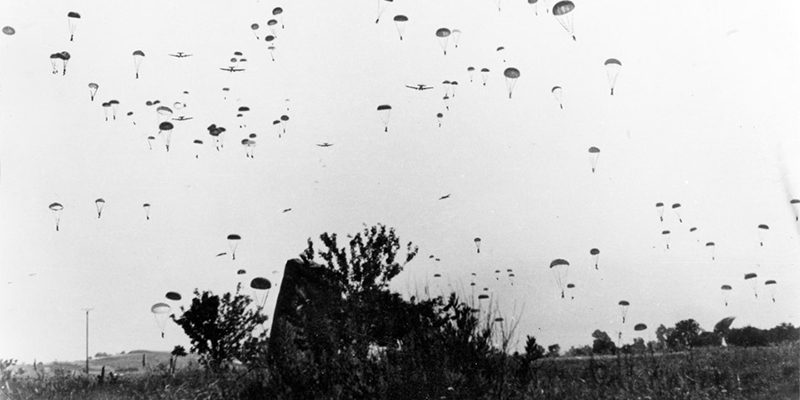The Battle of Crete: Defeat and Defiance (Virtual Tour 1/2)

Defeat and Defiance – A Virtual Battlefield Tour
On 20 May 1941, German forces launched an airborne assault on the island of Crete. They called it Operation Merkur, named after Mercury – the ancients’ divine herald, carried aloft on winged sandals.
In an aerial attack of unprecedented ambition, paratroopers and glider forces landed across Crete’s northern coast, aiming to capture key airfields. Facing them were many Allied units recently evacuated from mainland Greece. British, Australian, New Zealand and Greek units were unable to hold the crucial airfield at Maleme, allowing the Germans to bring reinforcements and supplies.
Allied forces fought on for several days and Cretan civilians resisted the invaders fiercely, but Allied commanders were eventually forced to order the evacuation of the island. The Royal Navy began a rescue operation on 28 May, with German air and sea attacks causing many casualties. By 1 June 1941, the evacuation was complete.
The Battle for Crete was a pyrrhic victory for German forces, who suffered heavy losses of around 4,000 killed or missing. They would never again attempt a major airborne assault. While around 18,000 Commonwealth soldiers were evacuated, some 12,000 were taken prisoner and a further 2,000 lost their lives. For the Cretan civilians, the occupation would be brutal and traumatic.
This talk provides an overview of the events in the air, on land, and at sea. It will highlight many of the most important locations, including the old Venetian harbour of Chania, the crucial airfield at Maleme, and areas around Heraklion. We will discover stories of individual heroism and tragedy, as well as the formidable resistance to the German occupation mounted by Cretan civilians, despite the harrowing cost of their defiance.
Become a Member
Enjoy exclusive Members events, subscription to 'Muster Magazine', free entry to exhibitions, exclusive curatorial tours and historical walks.
